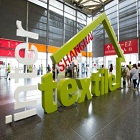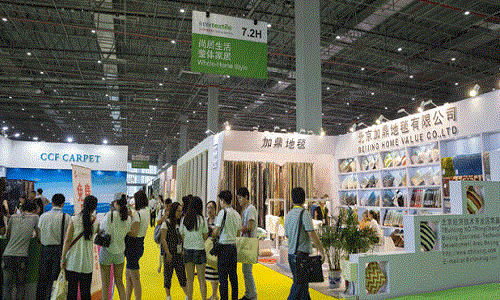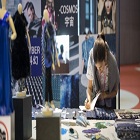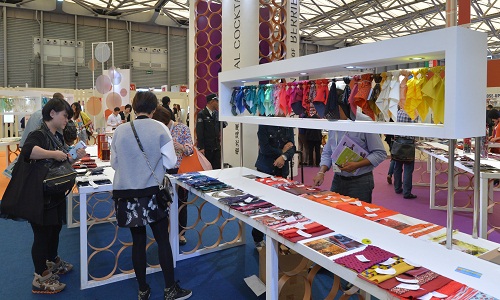FW
The Chhattisgarh government is keen to develop a green Textile Park near Raipur with elaborate solid waste management practices and rain water harvesting, officials informed. The project will also comprise of treated water supply system, storm water management and common effluent treatment plant.
The proposed textile park is envisaged to house world class eco-system for the textile industry. It will also house a testing laboratory (including equipment), design centre (including equipment), training centre, trade & display centre, conferencing and meeting facilities, warehouse/raw material depot, packaging unit canteen and worker hostels and recreation centre.
For the development of the said park, the Chhattisgarh State Industrial Development Corporation (CSIDC) has identified a land parcel measuring 30 hectares at Village Khapri, Tehsil Tilda in Raipur district. The proposed park is aimed at providing one-stop integrated facilities with manufacturing support, welfare and common infrastructure facilities to the prospective textile industries. Notably, the Central government has approved projects worth Rs 99 crores for upgradation of key industrial infrastructure in Chhattisgarh.
Currently, the infrastructure of Urla Industrial Area in Raipur and Sirgitti Industrial Area in Biilaspur are being upgraded which includes improvement of roads, water and power supply facilities, it is learnt. The Centre has approved an estimated Rs. 54.81 crore for upgradation of infrastructure facilities at Urla Industrial Area and around Rs. 44.60 crore for Sirgitti Industrial Area.
Aiming to make the ailing corporation operationally sound and economically viable, the Bangladesh Textile Mills Corporation (BTMC) is looking at reopening six closed textile mills with Chinese help. The six textile mills owning a total of 153 acres of land are: Ahmed Bawani Textile Mills in Demra, Quaderia Textile Mills in Gazipur, Dinajpur Textiles Mills in Dinajpur, Dost Textiles Mills in Feni, Tangail Cotton Mills in Tangail and RR Textile Mills in Chittagong.
As a part of the move, the Ministry of Textile and Jute has sent a proposal to the Planning Commission (PC) seeking the latter's approval to go for joint venture with a Chinese company. After getting the PC's approval, steps regarding re-opening of the BTMC mills would be taken under a 'government to government' arrangement between Bangladesh and China.
The move came in line with the government's decision not to sell any mill and revive the state-owned textile mills, they added. A proposal has been sent to the Planning Ministry which is considering the move. The use of outdated machinery is one of the major problems that the state-owned textile mills have been facing. The problem has also been severely hampering the production of existing seven units in operation while the BMRE (balancing, modernisation, rehabilitation and expansion) is a must to reopen the closed factories.
After Target Corp terminated a sourcing deal with Welspun India over cheap quality bed sheets being passed off as premium Egyptian cotton, Walmart Stores is reviewing Welspun’s cotton certification records. Besides the examination, Walmart plans to talk to the supplier and if any issues crops up, the retailer plans to handle it appropriately. Walmart happens to be Welspun's third-biggest customer, as per Bloomberg.
After Target Corp’s pull out, Welspun’s shares have been seen tumbling down 1ell to as low as Rs 65.85 in Mumbai trading on Tuesday. On Monday, the company said it's reviewing its supply chain and hiring a ‘Big Four’ accounting firm to examine its processes. After Monday's decline, the stock of Welspun has a market capitalization of $1.2 billion.
Welspun makes towels, sheets, rugs and carpets for 18 of the top 30 global retailers. Other major clients of Welspun include J.C. Penney Co. and Macy's Inc. Every fifth towel sold in the US is manufactured by Welspun India, according to the company. Welspun Group wants to become one of India's top 50 groups by market value by 2020.
"Countdown has begun for Asia’s leading trade event for the home textiles industry, Intertextile Shanghai Home Textiles-Autumn 2016 edition that opens tomorrow August 24th till August 27th at the Shanghai National Exhibition and Convention Centre. The four day event is a reflection of a booming international home textiles market and the increasing opportunities waiting to be tapped across countries."

Countdown has begun for Asia’s leading trade event for the home textiles industry, Intertextile Shanghai Home Textiles-Autumn 2016 edition that opens tomorrow August 24th till August 27th at the Shanghai National Exhibition and Convention Centre. The four day event is a reflection of a booming international home textiles market and the increasing opportunities waiting to be tapped across countries. The positive feedback of last year’s event has prompted the organizer to make it a found day-long event this year with participation of global brands from different regions under the same roof. “Given the relatively robust conditions in the domestic home textiles sector as well as steady demand for overseas brands, we expect that this year’s fair will be another success,” says Wendy Wen, Senior General Manager of Messe Frankfurt (HK) and goes on to add “The strong international nature of the fair shows that overseas brands are still seeking out opportunities in China and Asia, and that Intertextile Shanghai is their preferred platform to do so.”
Global exhibitors under one roof

Spread over 160,000 sq. mt. and six halls at the National Exhibition and Convention Center, the fair will feature around 1,150 exhibitors from 30 countries. The international exhibitors will be highlighted in a separate hall. A number of exhibitors representing over 30 brands such as Armonia di Interni, Boeme, Designers Guild, La CanTouch and Zimmer + Rohde along with exhibitors promoting products in the Whole-Home concept will be featured in a hall together for the convenience of the visitors. In Hall 4.1, seven countries viz, Belgium, India, Morocco, Pakistan, Portugal, Taiwan and Turkey will be featured. Some of the leading suppliers participating this year include upholstery brands Ateja, Celesta, Culp and Enzo Degli Angiuoni, Advansa, Brinkhaus and Cotton Council International, design studios like Antoinette et Freddy, Atelier Mineeda and Cosmo Kumagaias etc. The exhibition will also feature companies specialising in digital printing such as Atexco, d.gen, DIGITEX and Epson. Apart from the international exhibitors, four Chinese regional pavilions will have the country’s leading home textile brands.
Knowledge sharing through special
Insightful design and trend forecasting programs, product demonstrations and seminars are lined up as well. This year’s program includes three parts: Trend Area, Trend Concept Exhibition and Forum Space. The intention is to provide participants with the latest design and trend direction. While Trend Area will be designed by a Nelly RodiTM Agency, the internationally renowned specialists on consumer lifestyle demand, almost 11 famous Chinese designers will utilised the products of six renowned editor brands to interpret the trend theme ’Far Away’ in the Trend Concept Exhibition. Also, a series of seminars will be held in the Forum Space, with designers and trend experts sharing their views on interior decorations, market trends and the latest technology.
Apart from the Inter Design program, this year Messe Frankfurt has also cooperated with Lenzing to feature eco-friendly home textile products in the Green Zone. A number of Lenzing’s partner mills will showcase their green products including mattresses, bed linen, duvets, towels and carpets which focus on the TENCEL® fibre. There will also be seminars in the digital printing seminar area in which industry players share the latest industry updates and market information.
Inter textile Shanghai Home Textiles-Autumn edition is organised by Messe Frankfurt (HK), the Sub-Council of Textile Industry, CCPIT; and the China Home Textile Association (CHTA).
The Autumn 2016 edition of Intertextile Shanghai Apparel Fabrics, organized by Messe Frankfurt, is all set to open its doors at the National Exhibition and Convention Centre, Shanghai from October 11-13. The fair considered to be one of the most effective marketplaces for international business development, will highlight some of the key trends in design and printing primarily. The three day fair will also address the most pertinent issues of sustainable development through a series of discussions.

The Autumn 2016 edition of Intertextile Shanghai Apparel Fabrics, organized by Messe Frankfurt, is all set to open its doors at the National Exhibition and Convention Centre, Shanghai from October 11-13. The fair considered to be one of the most effective marketplaces for international business development, will highlight some of the key trends in design and printing primarily. The three day fair will also address the most pertinent issues of sustainable development through a series of discussions. It will feature an extensive range of fringe programs and events, including six ‘Trend Forums’ revealing overseas and domestic trends, as well as a series of seminars, the Digital Printing Forum and panel discussions offering the latest market information.
Forum to forecast future design trends

The event ,envisioned by the Intertextile Directions Trend Committee, which comprise of top trend forecasters from Doneger Creative Services (US), NellyRodi™ Agency (France) and Elementi Moda (Italy), as well as Sachiko Inoue (Japan), will put forth the trend forecast through the inter textile Directions Trend Forum under three major themes- Enigmatic, Manifesto and Eccentric.
While the theme ‘Enigmatic’ is described as a luxurious, sensual and thoroughly modern story, based on the blurring delineation between what is considered masculine and what is feminine. It would emphasise on tailoring balanced by touches of lingerie where urban and countrified settings meet. The mood is executed in a range of warm neutral tones, frosted pastel accents and metallic touches that emphasise the imperfect, yet precious nature. Simultaneously, ‘Manifesto’ reveals authenticity and nostalgia resonating through industrial inspiration coupled with an upcycled/recycled and sustainable mentality. Another major theme highlighted is ‘Eccentric’. This focuses on the world as a fashion stage, with highly original, playful and opulent fashion presentations. It would reveal historic, antique and ’70s references mix with casual elements for a personalised effect. In parallel forums, there will be in-depth discussion on trends on accessories, menswear (Hall 6.1), women’s wear and casual wear. These will also demonstrate the A/W 2017-18 domestic trends under four themes: Future Intelligence, Symbiosis Art, Balance Philosophy and Merging Time.
Digital Printing trends & Sustainability are major highlight
Keeping up with the forum agenda of 2015, there will be more in-depth panel discussions on digital printing with experts from Konica Minolta, Kornit Digital China and World Textile Information Network (WTiN), UK sharing their unique insights on various topics. The discussions are expected to highlight the impact of digital printing in changing the rules of the textile and apparel value chain and global trends in the roll-to-roll and direct-to-garment digital textile Industry. While the forum will forecast the key trends in sportswear, denimwear, premium bespoke menswear, it will also address issues opportunities & challenges of international children’s market after Brexit, holistic sustainability performance measurement and the highlights of smart textile era.
Messe Frankfurt is one of the world’s leading trade fair organisers, generating around €648 million in sales and employing 2,244 people. The Messe Frankfurt Group has a global network of 30 subsidiaries and 55 international Sales Partners, allowing it to serve its customers on location in 175 countries. Messe Frankfurt events take place at approx. 50 locations around the globe.
Despite it being a slow point of processing season when buyers face uncertainty about price trends and volume for the forthcoming season, Australian wool market has performed well once again. The overall result was an increase of 1 cent in EMI with rise in superfine wools and crossbreds offsetting similar declines in the medium merino segment. A strong, but relatively stable local currency had little effect on the wool market last week and overall, prices rose just 1 USC across the week.
Last week, buyers seemed to be less critical when it came to lower spec wools partly due to the continued tightness of supply with next week’s offering a meager. As buyers look to obtain their share of the available quantities of high quality wool lots available, superfine wools appear to be gathering steam for a jump in price.
Similar to last season, European buyers are aware of the volumes of wool available that meet their specifications as well as seasonal nature of this supply. The futures market indicates that there will be little correction in coming months with 21-micron trading at 1425 for September. Hence, the downslide appears to be limited to perhaps only 20 or 30 cents.
However, if the market were to ease by 20 or 30 cents in coming weeks, and then start to rise again, these purchasing managers would feel more comfortable that they have made the correct decision to capture the maximum seasonal opportunity.
The World Fibres Conference to be hosted by Hong Kong on November 9-10 will highlight latest developments in raw materials, fibres and textiles and give strategic insight on the forces influencing these complex, interdependent sectors. The key note speaker Rajen Udeshi, President-Polyester chain, Reliance Industries will provide an executive overview of the sector.
Other presenters will include: Alasdair Carmichael of PCI, Wood Mackenzie, who will present the global fibres outlook and Bruna Angel, also of PCI and Wood Mackenzie who will offer her view on cotton. Carmichael will discuss how global economic and social trends will affect fibre mix, including how the locations of manufacturing supply chains and the production technologies used by the industry are attaining growth, industry leaders will consider topics from sustainability, international trade dynamics and how geography affects competitive advantage, to changes in consumer health, lifestyle and demographics.
Industry analysts will throw light on volume demand for key fibre types and explore specific needs of each market segment, with particular focus on how this will affect the raw material and fibre chains for polyester, nylon, cotton and viscose. The program includes a review of the global economy and the outlook for oil prices, drawing on Mackenzie's upstream research. The team will consider the outlook for polyester and nylon margins and how the failing cotton harvests will affect other fibre types.
The agenda will include constructive debate, bringing together senior strategists, procurement leads, planners, business managers and marketers across these diverse industries.
The Vietnam Textile and Apparel Association (VITAS) wants the country’s master zoning plan for textile and garment industry development plan to be revised as it has become outdated. The industry’s shipments amounted to $27.5 billion last year and are expected to soar to $31 billion this year. Therefore, it is necessary to adjust the master zoning plan for textile and garment industry development until 2020 with a vision toward 2030, said Vietnam’s Deputy Minister of Industry and Trade Ho Thi Kim Thoa.
He said that Vietnam’s textile and garment sector is projected to grow strongly in the next decade owing to more bilateral and multilateral trade agreements the country has signed, especially the Trans-Pacific Partnership (TPP). Also, apparel importers are shifting orders to markets with abundant low-cost labour. As per VITAS’ chairman Vu Duc Giang, there is a big gap between the master zoning plan and reality. Hence, the association asked the government to review and revise it.
The textile and garment industry is in a good position to grow strong and the government needs to have a long-term strategy to develop the industry and enable it to bank on opportunities from the country’s international integration.
Despite being the fourth largest producer of cotton in the world, Pakistan remains at the bottom of the ladder in productivity. Its average per hectare yield of 560 kg is better than the Indian yield of 516 kg. However, India grows bulk of its cotton from rain-fed areas as against irrigated land that reduces its production cost. In contrast, Pakistan grows most of its cotton in the irrigated land of southern Punjab and Sindh. Pakistan’s cotton yield when compared to China is even lower. With a 1,460 kg yield, China extracts 2.6 times more cotton from the same piece of land than Pakistan does.
With the exception of Australia, all major cotton producing regions have recorded a decline in production in the last fiscal. In terms of the fall in percentage, Pakistan remains worst hit. Numerous factors such as pest attack, insufficient inputs and limitation of varieties contribute to the radical decrease in Pakistan’s production.
China is still the cotton powerhouse that holds 62 per cent of world’s cotton stocks of 104.1 million bales. But it is expected to lose its position as the largest producer of cotton to India due to unfavourable weather conditions and reduced government support. The Chinese government that has taken up various policy measures to cater to the cotton requirement of its large textile industry remains cautious about price stability to ensure growers are not hurt. It is releasing targeted quantities from its cotton reserves and allowing limited cotton imports.
With smaller landholdings per farmer and with substantial rain-fed areas, China reaches the highs of cotton productivity only due to adoption and application of technology and related innovations. It remains a keen follower of intensive cotton farming technologies.
The September edition of Milano Unica will be held from September 6-8, at Fieramilano Rho. This edition deals in fabrics, clothing, textiles and fashion and has been designed for a global audience. It will open on the last exhibition day of both the Micam, (that showcases products like stylish and fashionable shoes for men, women and kids) and Mipel, (the leather goods market) to underscore the determination and political-economic importance of teaming up.
The 'New Beginning' of the 23rd edition of Milano Unica has been envisaged on the principle of offering a new dimension of service, creativity and excellence of the proposals put on display, with a view to accompanying visitors through the values of quality and authenticity that characterize ‘Made-in-Italy’ production.
Italy's most prominent and important manufacturers will participate in the exhibition along with scores of foreign exhibitors and participants from the Japan and Korea observatories , that were selected based on product quality. Along with the Japan and Korea observatories and traditional Vintage Area, Milano Unica will also include an exhibition that gives visibility to the designers of 'The Fabric Program', the project developed in collaboration with the US Chamber of Fashion (CFDA).
Milano Unica represents an innovation in textile and accessories trade shows, as it introduces a new system of establishing relationships between fabric manufacturers and customers and, also, the entire fashion system, thanks particularly to the thorough and complex trend research area.












